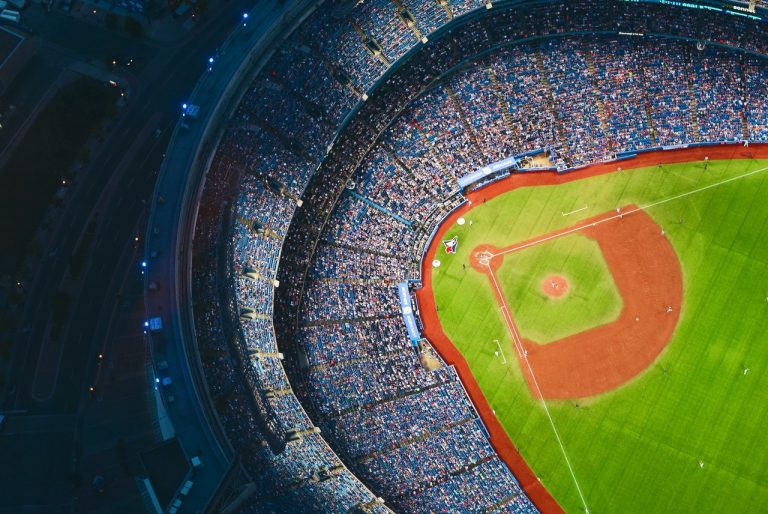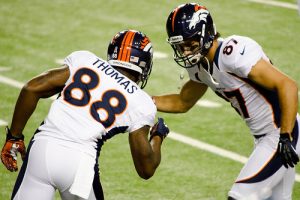Play ball! After tense labor negotiations between Major League Baseball’s ownership group and its players’ union prompted a labor lockout forcing the first week of the season to be postponed, the two sides agreed to a new collective bargaining agreement on March 10 – paving the way for the 2022 season to kick off a new era of America’s pastime at its highest level.
The current MLB season, which began on April 7, brings a whole host of new evolutions to the business of baseball, including increased player salaries under the new agreement, opportunities for new advertising deals on jerseys and helmets and new broadcast partners for the league. Here is a quick rundown of the biggest changes happening in 2022.
Biggest changes to the Collective Bargaining Agreement
The most notable changes to baseball’s finances address the grievances between the MLB Players’ Association and the league’s ownership group that caused the nearly-season-derailing lockout in the first place. Because Major League Baseball has never operated with a hard salary cap on players’ payroll, unlike the NBA and NFL, the amount made by players is much more uneven. While top baseball stars can earn hundreds of millions of dollars in guaranteed long-term contracts, the $570,000 league-wide minimum salary in 2021 was the lowest among North American major professional sports.
That minimum increased by nearly 23% to $700,000 starting this season – the largest single-year salary minimum increase in the history of the league – with additional increases of $20,000 per year slated for the next several years.
The Competitive Balance Tax or “luxury tax,” which operates as a “soft” salary cap by penalizing teams for spending over a certain threshold, also saw that threshold increase. That number jumped by $20 million from $210 million to $230 million as part of the new agreement and will increase by $3-4 million per year over the next several years.
This will allow cash-flush teams such as the New York Yankees and the Los Angeles Dodgers to continue doling out large contracts to top stars. In recent seasons, the Yankees have added superstars Giancarlo Stanton and Gerrit Cole on nine-figure contracts while the Dodgers have done the same with former MVPs Mookie Betts and Freddie Freeman. However, the respective ownership groups of other top franchises – most notably the Chicago Cubs and Boston Red Sox – have resisted paying some of their own top players premium contract extensions in recent years and have cited the luxury tax as a reason.
Lastly, in an attempt to smooth out the inequality in earnings between players starting out in the league on minimum contracts and their much-higher-paid veteran counterparts, the new CBA has allowed for the creation of a $50 million salary bonus pool in order to pay top-performing younger players more fairly before they are eligible for pay raises via salary arbitration. As MLB.com points out, this will allow players like Corbin Burnes of the Milwaukee Brewers and Randy Arozarena of the Tampa Bay Rays – who won the National League Cy Young Award and American League Rookie of the Year in 2021, respectively – to earn several times their near-minimum rookie salaries due to their performance.
MLB is seeking more advertising opportunities
The NBA became the first major professional league in North American sports to wear advertising on in-game jerseys when it began its new apparel partnership with Nike in 2017. Despite some initial outcry, fans adjusted to the change fairly quickly, and now it seems normal to watch an NBA game where both teams each have a small jersey patch with a brand’s logo near the left shoulder of their uniforms.
Starting in 2023, Major League Baseball will join the NBA in featuring small advertising patches on their in-game Nike jerseys. According to SportsLogosNet, the patch will also be a small one but set on the left sleeve of each uniform instead of the left upper chest area, where the Nike logo on MLB jerseys currently sits. Much like the NBA setup, MLB teams will be able to sell off the advertising space as long as the deals are approved by the league, but can only partner with one brand at a time whose logo will display across all the teams’ jerseys.
However, Major League Baseball is reportedly taking things one step further and selling advertisements as a small sticker on each team’s helmets, starting in the 2022 postseason. The league will control the sale and distribution of these ads, making it likely that we will see one major partnership deal with a brand that gets to put its logo across every team’s helmet.
There have not yet been any public estimates regarding how much these new advertising deals may be worth. Ad space on NBA jersey patches usually costs brands around $7-10 million per year for each deal, according to The Athletic.
Baseball courts cord-cutters and cord-nevers
As Major League Baseball desperately tries to grow its audience, it is making a bold foray into putting a significant amount of its national television programming on two relatively new streaming services: Apple TV+ and NBC’s Peacock. MLB has revised its weekly national broadcast schedule with Turner, which includes an expanded game package on TBS on Tuesday nights and additional rights to highlights for Turner’s digital platforms, including the popular Bleacher Report app. Here’s a quick breakdown of MLB’s new national television layout:
| Partner | Number of games | Reported annual cost (source) | Contract duration | Time window | Notes |
|---|---|---|---|---|---|
| Fox | 52 + playoffs (not including special events) | $755 million | Through 2028 | Saturdays, special events & select weeknight games on Fox Sports 1 | Includes All-Star Game, two division series, league championship series, World Series |
| ESPN (Disney) | 30 + playoffs | $550 million | Through 2028 | Sunday evenings | Includes four wild card series |
| TBS (Turner) | 30 + playoffs | $535 million | Through 2028 | Tuesday evenings | Includes two division series and one league championship series |
| Apple TV+ | 50 | $85 million | Through 2028 (Apple has an opt-out after 2023) | Friday evenings (two games per week) | Games produced by MLB Network |
| Peacock (NBC) | 18 | $30 million | Through 2023 | Sunday mornings |
Major League Baseball reportedly hopes to reach a younger, more diverse audience of “cord-cutters” and even some millennial and gen-z “cord nevers” who may never subscribe to a traditional cable TV package. It marks the first live sports partnership for Apple TV+, though a deal with the NFL for its Sunday Ticket package could be in its future. The Peacock deal marks the first time NBC will nationally broadcast MLB games in any medium since 2000 and the first time the network has carried a weekly Sunday MLB game since the vaunted “NBC Game of the Week” telecasts that ran from the 1950s through the 1980s.
Additionally, Amazon Prime will exclusively stream 21 Yankees games in the New York market. The broadcasts will be produced by longtime Yankees regional sports network partner YES (which Amazon owns a stake in) and reportedly feature advanced statistical overlays similar to what Amazon has done in the past with Thursday Night Football simulcasts.
MLB has national programming via its league-owned MLB Network channel and is once again offering its MLB.TV streaming package to give fans the ability to watch any out-of-market locally televised game. However, MLB.TV’s controversial blackout policy remains. Also, as part of the rights deal with ESPN, one locally broadcasted game per day is available to stream out-of-market for ESPN+ subscribers.
The business of baseball: Looking forward
Despite all the changes, Major League Baseball still faces several long-term issues going forward. The 99-day lockout and animosity between management and the players’ association that permeated throughout the lockout is a major stain on the reputation of the league, especially considering that 29 of the 30 MLB franchises are now evaluated at over $1 billion according to the 2022 edition of Forbes’ annual rankings. Additionally, both the average individual ticket price and average overall cost of attending an MLB game increased in 2021 and each metric shows signs of continuing to trend upward.










